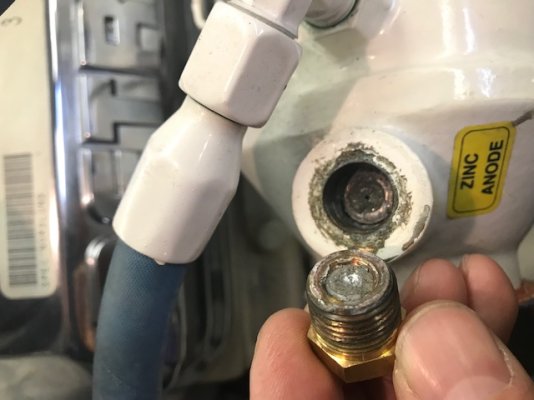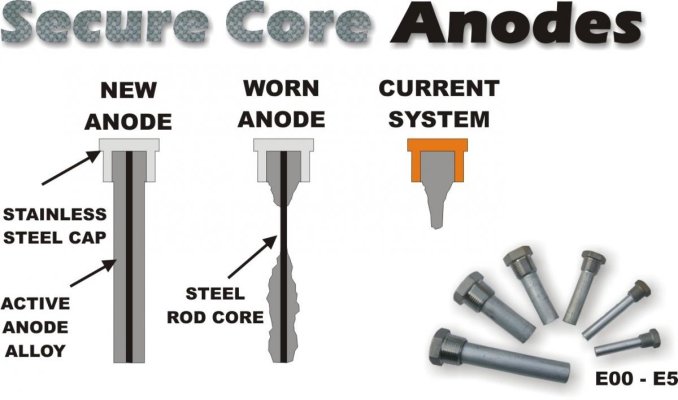tozz
Senior Member
- Joined
- Feb 13, 2017
- Messages
- 323
- Location
- USA
- Vessel Name
- Conundrum
- Vessel Make
- Nordlund 63' Pilothouse
Checked pencil zincs this past weekend. Snapped two (picture attached). Any tips for:
1. Removing the zinc that is precariously holding on for dear life?
2. Loosening the zinc prior to attempting to loosen the brass cap? WD40?
Ideas I've researched so far are everything from pushing it in and not worrying about it... pushing it in then tearing apart the heat exchanger to remove it...or try to remove it carefully without dropping it into the exchanger with 1) reverse drilling or 2) superglue something to the top of the remaining portion and pull it out.
TIA
-tozz
1. Removing the zinc that is precariously holding on for dear life?
2. Loosening the zinc prior to attempting to loosen the brass cap? WD40?
Ideas I've researched so far are everything from pushing it in and not worrying about it... pushing it in then tearing apart the heat exchanger to remove it...or try to remove it carefully without dropping it into the exchanger with 1) reverse drilling or 2) superglue something to the top of the remaining portion and pull it out.
TIA
-tozz



